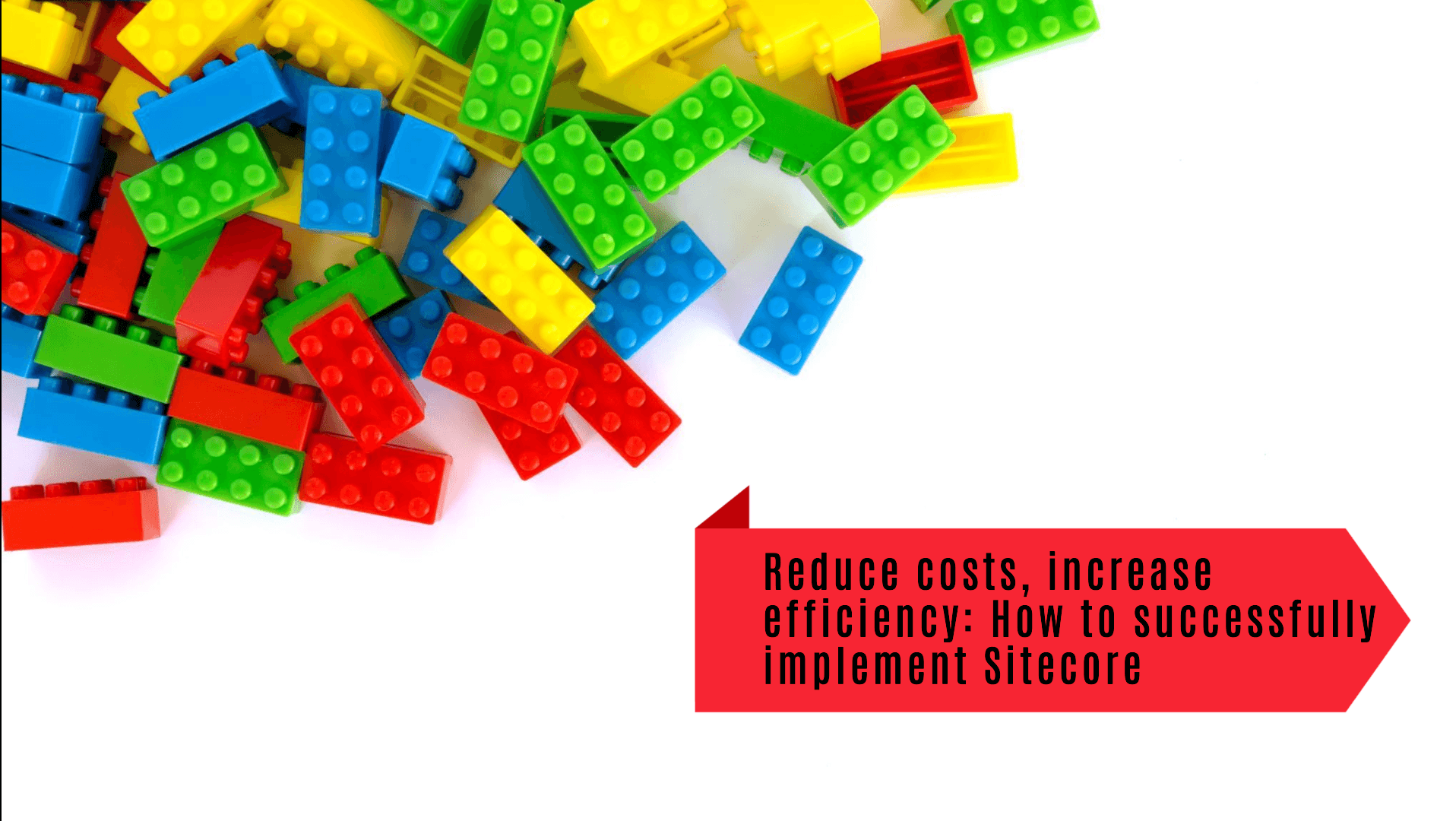The implementation of a powerful digital experience platform (DXP) such as Sitecore can represent a significant investment. But if it is planned and implemented correctly, not only can costs be reduced in the long term, but operational efficiency can also be significantly increased. In this article, you will learn which technical strategies and best practices ensure that your Sitecore implementation remains efficient, scalable and cost-effective right from the start.
Challenges of a Sitecore implementation
An inadequately planned implementation can lead to unexpected costs and inefficient processes. Typical challenges are:
- Complex integrations with existing systems (CRM, ERP, PIM).
- High initial development and infrastructure costs, which often arise from redundant work steps or a lack of automation.
- Long time to market if standardized methods are not used.
- Lack of scalability, which requires subsequent, costly adjustments.
However, by using modern architectures and DevOps practices, these challenges can be effectively solved.
Technical strategies for a cost-effective Sitecore implementation
1. Headless and hybrid headless for faster development and lower maintenance costs
Sitecore offers full support for headless and hybrid headless architectures via Sitecore Experience Edge. By using GraphQL APIs, you can manage content centrally once and play it out across different channels – from web to mobile to IoT.
Benefits for cost optimization:
- Separation of frontend and backend enables parallel development streams.
- Reduced maintenance costs through standardized APIs.
- Faster responsiveness to new technologies or frontend frameworks such as React, Angular or Vue.js.
Practical example:
The United Arab Emirates relied on Sitecore with a headless architecture for its official tourism platform. By reusing components across different touchpoints, development costs were reduced by 35% and content maintenance was significantly accelerated.
2. Cloud-native and containerization for scalability and cost efficiency
Instead of making large investments in on-premise infrastructure, Sitecore offers cloud-native deployments with support for Docker, Kubernetes and Sitecore Managed Cloud or you go for the fully SaaS solution.
How does this reduce costs?
- Automatic scaling on demand – you only pay for resources used.
- Lower infrastructure and maintenance costs through managed services.
- Faster deployment of development, test and production environments.
Technical implementation:
- Use of Azure Kubernetes Services (AKS) or AWS EKS for a containerized deployment.
- Automation of the infrastructure with Terraform or Pulumi.
- CI/CD pipelines with Azure DevOps or GitHub Actions to automate releases.
Practical example:
Volvo Cars used Sitecore Managed Cloud and AKS for a global platform. The company reduced its operating costs by 40% and was able to roll out new digital services in weeks instead of months.
3. SXA & low-code for faster development and lower costs
The Sitecore Experience Accelerator (SXA) is a powerful low-code tool that helps companies create standardized layouts, components and designs without in-depth development knowledge.
Why does it save money?
- Developers do not have to program each component from scratch.
- Content and designs can be customized without IT support.
- Reusable building blocks accelerate rollout across multiple brands or regions.
Practical example:
L’Oréal implemented Sitecore SXA for over 40 brand websites worldwide. This reduced the time to market for new pages by 60%, while significantly reducing design and development effort.
4. AI-supported automation and personalization for less effort in marketing
Sitecore relies on artificial intelligence (AI) and machine learning to make content personalization and automation more efficient. By using Sitecore AI & Sitecore Personalize, marketers can create personalized experiences without having to rely on manual segmentation.
Cost effects:
- Automated segmentation saves resources in the marketing team.
- Reduced costs for third-party tools through an integrated solution.
- Higher conversion rates through relevant content in real time.
Practical example:
American Express Global Business Travel used Sitecore Personalize to issue dynamic recommendations based on user data. AI-supported personalization led to 20% higher revenue per customer.
Best practices for a cost-effective Sitecore implementation
Proof of Concept (PoC) first
Before you implement a complete platform, test core functions in a minimal viable product (MVP). This allows you to identify weak points early on and avoid high adaptation costs.
Modular introduction instead of big bang
Instead of a complete implementation from the beginning, use Sitecore iteratively. Start with essential functions and expand the platform as needed.
Automated tests & continuous deployment (CI/CD)
Use automated tests for recurring processes. CI/CD pipelines allow changes to be rolled out faster and with fewer errors.
Use Sitecore Managed Services where appropriate
Instead of operating your own infrastructure, Sitecore Managed Cloud offers a scalable environment with less maintenance effort.
Conclusion: Increase efficiency – minimize costs
With a strategic approach, Sitecore can be implemented efficiently and cost-effectively. Companies that rely on headless technology, cloud-native architecture, low-code tools and AI-powered automation not only reduce operating costs, but also increase their digital agility.
By implementing it step by step and in a modular manner and using modern DevOps methods, you can avoid costly mistakes and maximize the ROI of your Sitecore implementation.
Are you ready to implement Sitecore efficiently and cost-effectively? Then now is the right time to optimize your digital strategy!


